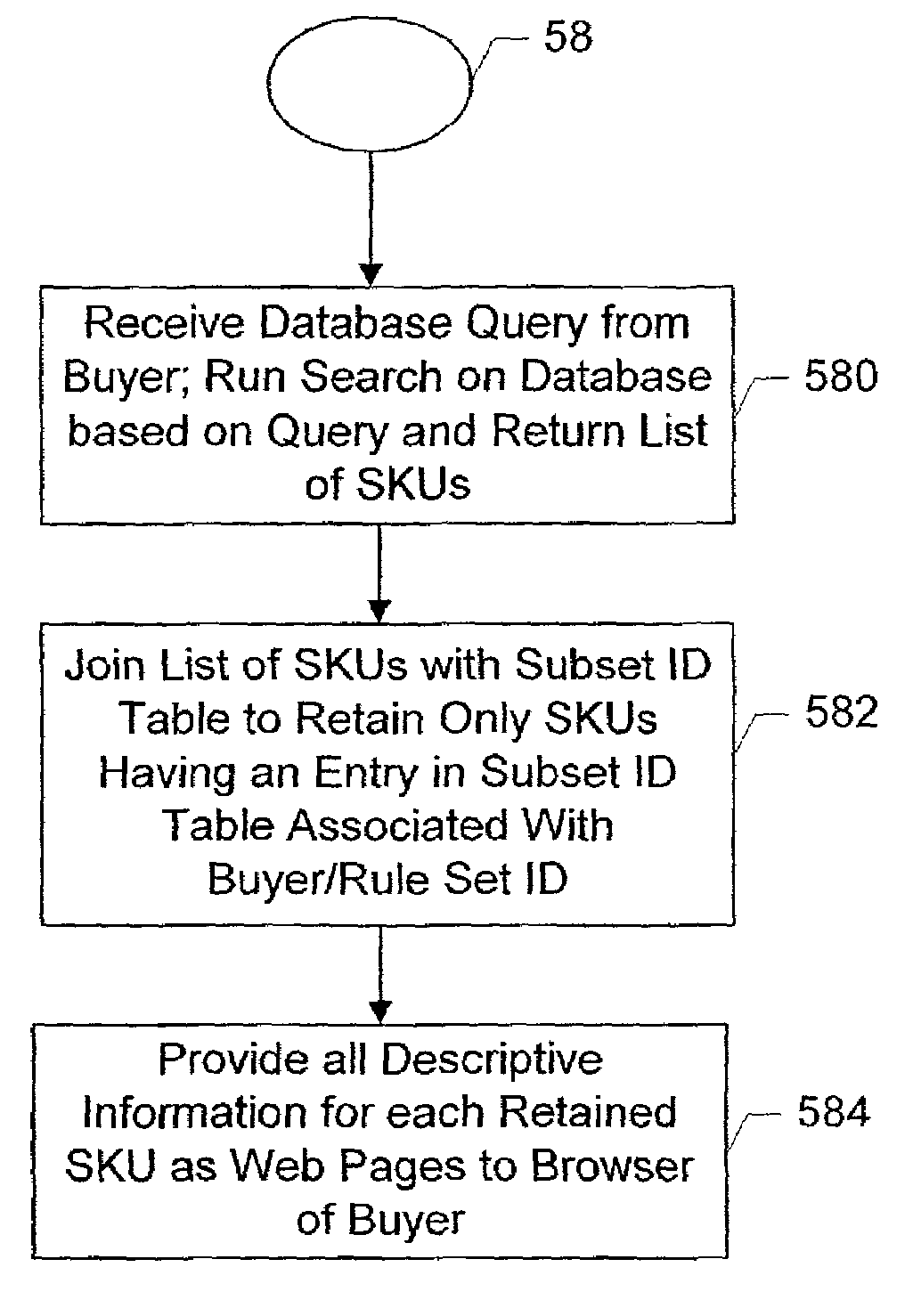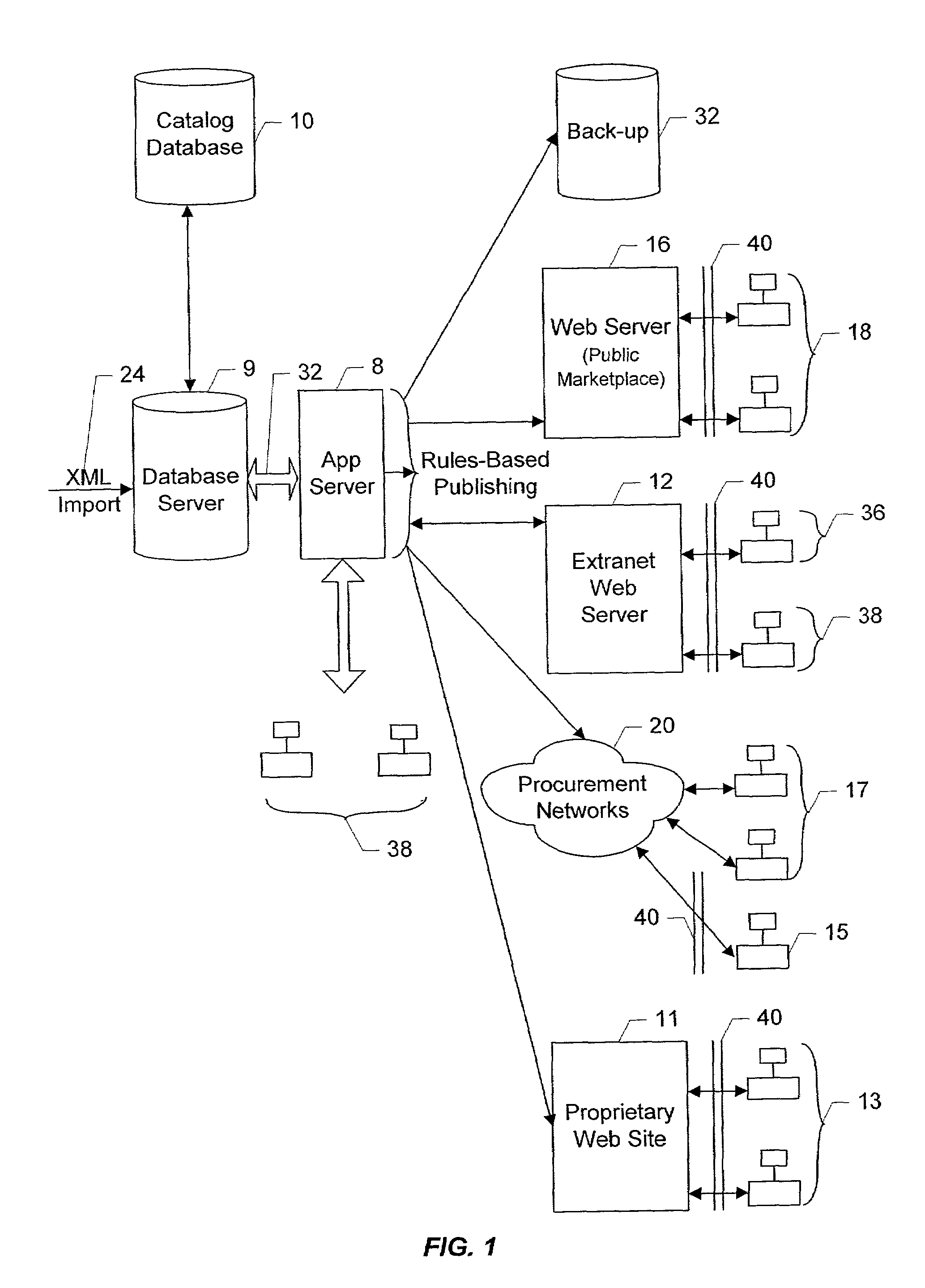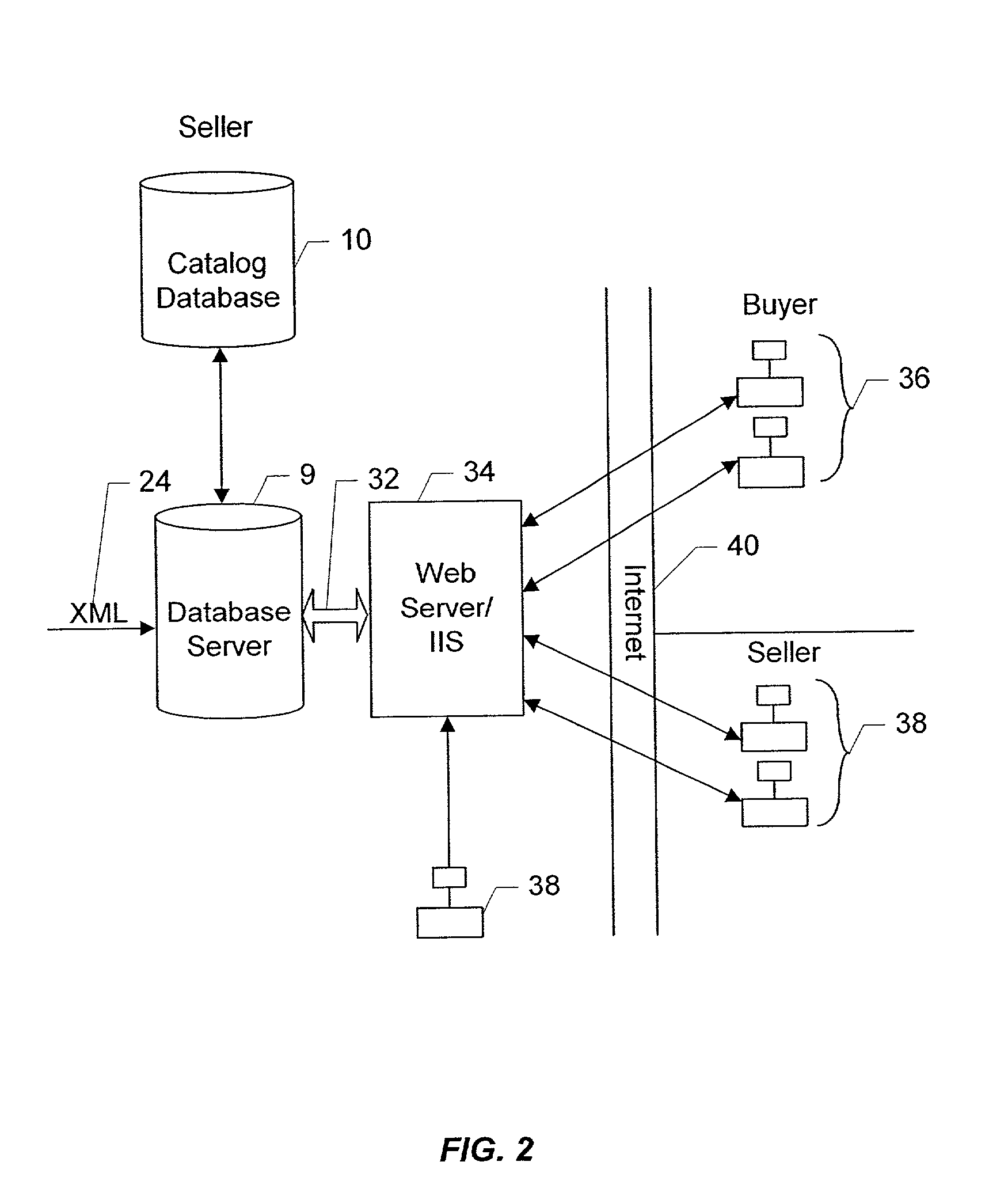Rules based custom catalogs generated from a central catalog database for multiple entities
a catalog database and custom design technology, applied in the field of online catalogs, can solve the problems of not often finding it desirable for sellers, difficult to maintain even one version of an e-catalog, and more expensive than computer equipment targeted at consumers
- Summary
- Abstract
- Description
- Claims
- Application Information
AI Technical Summary
Problems solved by technology
Method used
Image
Examples
Embodiment Construction
[0027]Overview
[0028]One embodiment of the method and apparatus of the invention generates an arbitrary number of customized versions of a seller's catalog for an arbitrary number of buyers or buyer groups from a centrally maintained catalog database consisting of all of the seller's catalog data. The seller's catalog database is centrally managed and maintained. The seller's catalog database consists of data representing some or all of the products or services (i.e. items) offered by the seller. Each item is categorized using a product type having a set of attributes and a unique set of values for those attributes. Each item is identified with a unique SKU, and is represented in the database by its SKU and each of its attribute values. Also associated with each item SKU is descriptive information (e.g. descriptive text, pictures, and the like) normally associated with the display of such items in a catalog.
[0029]A buyer's custom version of the seller's catalog consists of a subset o...
PUM
 Login to View More
Login to View More Abstract
Description
Claims
Application Information
 Login to View More
Login to View More - R&D
- Intellectual Property
- Life Sciences
- Materials
- Tech Scout
- Unparalleled Data Quality
- Higher Quality Content
- 60% Fewer Hallucinations
Browse by: Latest US Patents, China's latest patents, Technical Efficacy Thesaurus, Application Domain, Technology Topic, Popular Technical Reports.
© 2025 PatSnap. All rights reserved.Legal|Privacy policy|Modern Slavery Act Transparency Statement|Sitemap|About US| Contact US: help@patsnap.com



